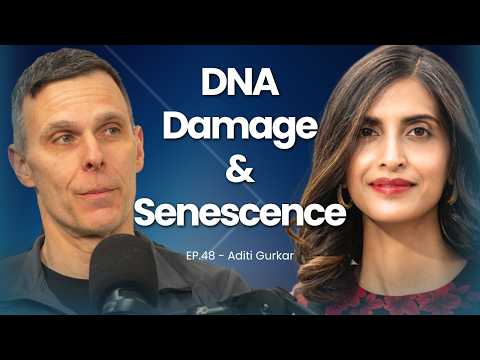In May 2024, Matt delivered a talk at the 2024 Glenn AFAR Grantee Conference in Santa Barbara, California and met with several people doing interesting work in the longevity field. One of these was Aditi Gurkar, an assistant professor in the University of Pittsburgh’s Aging Institute, Division of Geriatric Medicine whose lab focuses on the downstream effects of DNA damage on aging. Prior to setting up her lab at the University of Pittsburgh, Aditi conducted research on the impact of DNA damage on aging at Scripps Research. She also completed postdoctoral training at Massachusetts General Hospital/Harvard Medical School and the Broad Institute of MIT and Harvard, where she focused on the tumor suppressor p53 as well as on autophagy regulation. Aditi received a PhD and a B.S. from the Boston University School of Medicine and Florida International University in Miami respectively. Matt and Aditi spend much of this episode chatting about senescent cells: how Aditi developed a focus on cellular senescence and found its relevance to aging, potential therapeutic benefits of senescent cell clearance, and the much-debated question of how to define a senescent cell. They also discuss the importance of “zooming out” from narrow areas of focus in the geroscience field to find new solutions and of breaking your own models on your way to productive new directions in science.
.
0:00 Introduction
1:11 How Aditi became interested in the biology of aging
8:04 Some people say that the potential impact of reprogramming is small because the DNA damage is permanent: Aditi’s take
11:52 How do you differentiate between cellular senescence and apoptosis?
13:08 Cellular senescence and lipid mediators that may drive inflammation
16:06 Aditi’s early work in cellular senescence + why senescence happens
19:03 How can we define a senescent cell?
22:15 Reprogramming senescent cells
24:20 The different flavors of senescent cells
26:20 New tools to explore cellular senescence
34:38 Will clearing senescent cells have large therapeutic benefits for life- and/or healthspan? How effective have the senolytics tested so far in animal models been at clearing senescent cells?
39:45 Is exercise a senolytic?
41:36 Why do some people believe that senescent cells don’t exist?
46:55 The most compelling evidence that DNA damage is a causal mechanism of aging
53:27 Does cellular senescence happen in C. elegans?
56:15 Matt summarizes his talk: reflections on a quarter-century of aging biology
1:05:10 Wrapping up
.
Enjoy!
